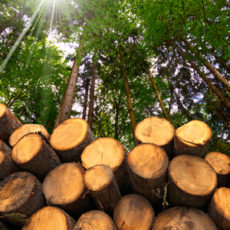When we cut through all the debate, the arguments put forth from here, there and everywhere, one thing becomes abundantly clear: in order to save the planet, there needs to be a collective effort. No one can claim innocence in the drastic- but perhaps necessarily so- charge of the “murder of the planet”. If you’re breathing, you are contributing to the destruction of the ozone layer. That is because the biological process of respiration by definition involves the inhalation of oxygen (O2) and the exhalation of carbon dioxide (CO2). Don’t hold your breath though- just keep reading to find out how greenhouse gases are making the blue planet sick and why knowing your carbon footprint is the first step to help heal it.
1992 was a banner year for the human race. During those 12 months, Whitney Houston made hearts stop with her signature ballad, the Mall of America opened it’s doors and officially signaled the end of the Cold War, the Space Shuttle Endeavor made rounds around the Earth- and Wackernagel and Rees became modern day prophets. If you are having a hard time placing ol’ Wackernagel and Rees, you’ll be excused; even the prophets of old were rarely recognized in their day and age. Make no mistake, however, their faces will be carved onto mountainsides, as soon as humanity is able to look back at climate change and laugh as if it were a bad joke told by drunk Uncle Jim at the family cookout. Someone please keep Uncle Jim away from the coal-powered grill!
Professor William Rees and his PhD student Mathis Wackernagel from the University of British Columbia in Vancouver, Canada were the first to put forth the concept of an “ecological footprint”, which identifies the cost that human civilization has on natural resources. They were able to measure the effect of human activity in terms of the amount of “Earths” that would be required to compensate for it. In 2013, for example, scientists estimated that the ecological footprint of the planet was equal to 1.6 Earths; that is to say, it would take 60% more natural resources than is currently available to offset the existence of humans and their destructive habits.

From this branch sprouted forth the idea of carbon footprints. There is nothing more natural than breathing; when a person exhales, plants eagerly gobble up the CO2 and spit out oxygen as a thank you. Life’s big secret is that everything in nature is cyclical. Even methane (the greenhouse gas charged with being more harmful in the short term than carbon dioxide) is so natural that it is present- excuse the toilet talk- in flatulence. But what happens when, in order to satisfy the global population’s appetite for steak and cheese, extraordinary amounts of cattle are bred and raised in artificial enclosures? They fart, producing methane in such quantities as to cause serious problems for the ozone layer.
But, when it comes down to it, it doesn’t matter if you are measuring the human impact on the planet in terms of Earths, greenhouse gases, cow farts, or any type of farts for that matter. The important thing is acknowledging that human activity does, in fact, have an impact and then taking steps to curb it. According to researchers, the average global carbon footprint is 5.7 tons of carbon dioxide equivalent (CO2e) per person per year. Thank heavens for Africa and India, which has a carbon footprint well below the average, and thereby making up for the rest of the planet.
Scientists believe that if climate change increases global temperatures by more than 2 degrees Celsius, it would spell catastrophe. The average carbon footprint must be reduced from 5.7 tons ofCO2e per person, to around 2.5 tons ofCO2e. If Europeans, with aCO2 of 13.8 tons, need to go on a carbon dioxide diet in order to make the scale move in the right direction, that means Americans, Australians and Luxemburgers need to go on a virtual fast: citizens of each of these countries have a CO2e of over 25 tons!
It’s important to remember, however, that carbon dioxide equivalent is just that- an equivalent. It equates behaviors as diverse as water usage and wood chopping to an estimation of the amount of carbon dioxide that would be released into the atmosphere. For this reason, swrm caters to you. Through the swrm app, you’re able to measure your energy usage in terms of CO2e, watts, and tons of coal equivalent. You can even measure your Uber ride’s energy footprint in terms of burritos (watch out for the methane!), and beehives. If you read our previous article on the industrious bee, you can understand why we are absolutely obsessed with this last option!



